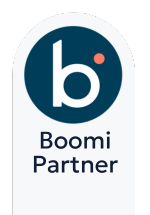There has never been a more crucial time for seamless application and data integration. All sizes of businesses are constantly searching for more efficient ways to connect systems, gather data, and enable data-driven decision-making. Application Programming Interfaces (APIs), Extract, Transform, and Load (ETL) tools, and Integration Platform as a Service (iPaaS) are three crucial integration strategies that stand out. Choosing the best strategy may have a significant impact on the effectiveness and performance of your business since each strategy has its own unique set of characteristics and capabilities. The three integration approaches, their differences, and appropriate times for each will all be covered in this blog.

Understanding API Integration
APIs, or Application Programming Interfaces, serve as a bridge between different applications or systems. They define how software components should interact, allowing for the exchange of data and functionalities. API integration is a powerful tool that offers real-time connectivity and versatility. Here are some key considerations when contemplating API integration:
- Real-time Data Exchange: APIs are the best choice for applications that require rapid access to the most recent data since they are built for real-time data flow. For real-time data-dependent applications like financial services or monitoring systems, this is especially helpful.
- Versatility: Since they may be used to link both cloud and on-premises applications, APIs are adaptable to a variety of scenarios. Businesses may link a wide range of applications, from more recent cloud-based services to legacy systems, because of this versatility.
- Developer-Centric: API integration typically involves development work, as it requires creating and maintaining custom code to facilitate communication between systems. It’s a preferred choice when developers have the expertise and time to build and maintain APIs.
- Access Control and Security: APIs can offer fine-grained access control, allowing organizations to secure data and functionalities. However, this responsibility often falls on the development team, necessitating robust security practices.
Exploring ETL Tools
ETL, which stands for Extract, Transform, Load, is a method of data integration that focuses on data consolidation and transformation. ETL tools are typically used to extract data from various sources, transform it into a consistent format, and load it into a data warehouse. Let’s dive into the key features of ETL integration:
- Batch Processing: ETL tools operate in a batch processing mode, which means data is extracted, transformed, and loaded periodically, often on a schedule. This approach is suited for applications that don’t require real-time data but benefit from consolidated and organized data sets.
- On-Premises Emphasis: ETL tools are traditionally used for on-premises data integration, making them a suitable choice for organizations that rely heavily on legacy systems or on-site data storage.
- Simplified Transformation: ETL tools simplify data transformation by providing pre-built functions and transformations. This can reduce the complexity of data processing and make ETL accessible to data analysts and non-developer users.
- Consumption-Based Pricing: Many ETL tools offer consumption-based pricing models, allowing organizations to pay only for the resources they use. This can be cost-effective for companies with fluctuating data integration needs.
Navigating iPaaS
Integration Platform as a Service (iPaaS) is a cloud-based solution that offers a comprehensive approach to application and data integration. iPaaS platforms provide pre-built connectors, data mapping tools, workflow automation, and other features. Let’s explore the characteristics of iPaaS:
- Broad Integration Capabilities: iPaaS is designed to handle a wide range of integration tasks, from connecting cloud-based services to on-premises systems, automating workflows, and simplifying data mapping. It provides a holistic solution for various integration needs.
- Business User-Friendly: iPaaS platforms often feature user-friendly, drag-and-drop interfaces, allowing business users to set up integrations without extensive coding. This accessibility reduces the reliance on developers and accelerates integration projects.
- Scalability and Reliability: iPaaS solutions are built on scalable and reliable cloud infrastructures, ensuring consistent performance and easy scaling as the organization’s needs evolve.
- Integration vs. Monetization: iPaaS focuses primarily on integration and workflow automation, making it ideal for organizations seeking efficient ways to connect their systems and applications.
When to Use Each Approach
The decision between API integration, ETL tools, and iPaaS is determined by your organization’s individual needs and goals. Consider the following scenarios:
- Real-Time Data Access: API connectivity is the way to go if your organization demands real-time data access and fast changes. It is appropriate for use in applications such as financial trading platforms and real-time monitoring systems.
- Legacy Systems and Batch Processing: ETL tools are a good fit when you have on-premises legacy systems and need to perform batch data processing. They are also cost-effective for companies with fluctuating data integration demands.
- Simplified Integration and Business Users: If your aim is to empower business users to set up integrations without extensive coding, iPaaS is an excellent choice. It simplifies integration processes and reduces the reliance on developers.
- Comprehensive Integration Needs: Organizations with diverse integration needs, including connecting cloud and on-premises systems, automating workflows, and data mapping, will benefit from iPaaS solutions that offer a wide range of integration capabilities.
Conclusion
Choosing the proper integration strategy, whether it’s API, ETL, or iPaaS, is a critical decision that may have a big influence on your organization’s productivity and capacity to use data power. Consider the unique needs of your organization, such as real-time data access, legacy system integration, the need for developer skills, or the need to empower business users. You may make an educated decision and ensure that your integration approach corresponds with your long-term company goals by examining these variables. Finally, in today’s data-driven market, the key is to choose the technique that best matches your specific objectives, allowing you to exploit data as a strategic asset.
RESKOM, a leading provider of integration services, provides a wide range of integration solutions adapted to your individual requirements. Our professionals have extensive experience in API, ETL, and iPaaS integration, ensuring smooth communication across your systems. We collaborate closely with your organization to develop and implement the best integration strategy, allowing you to maximize the value of your data resources.


